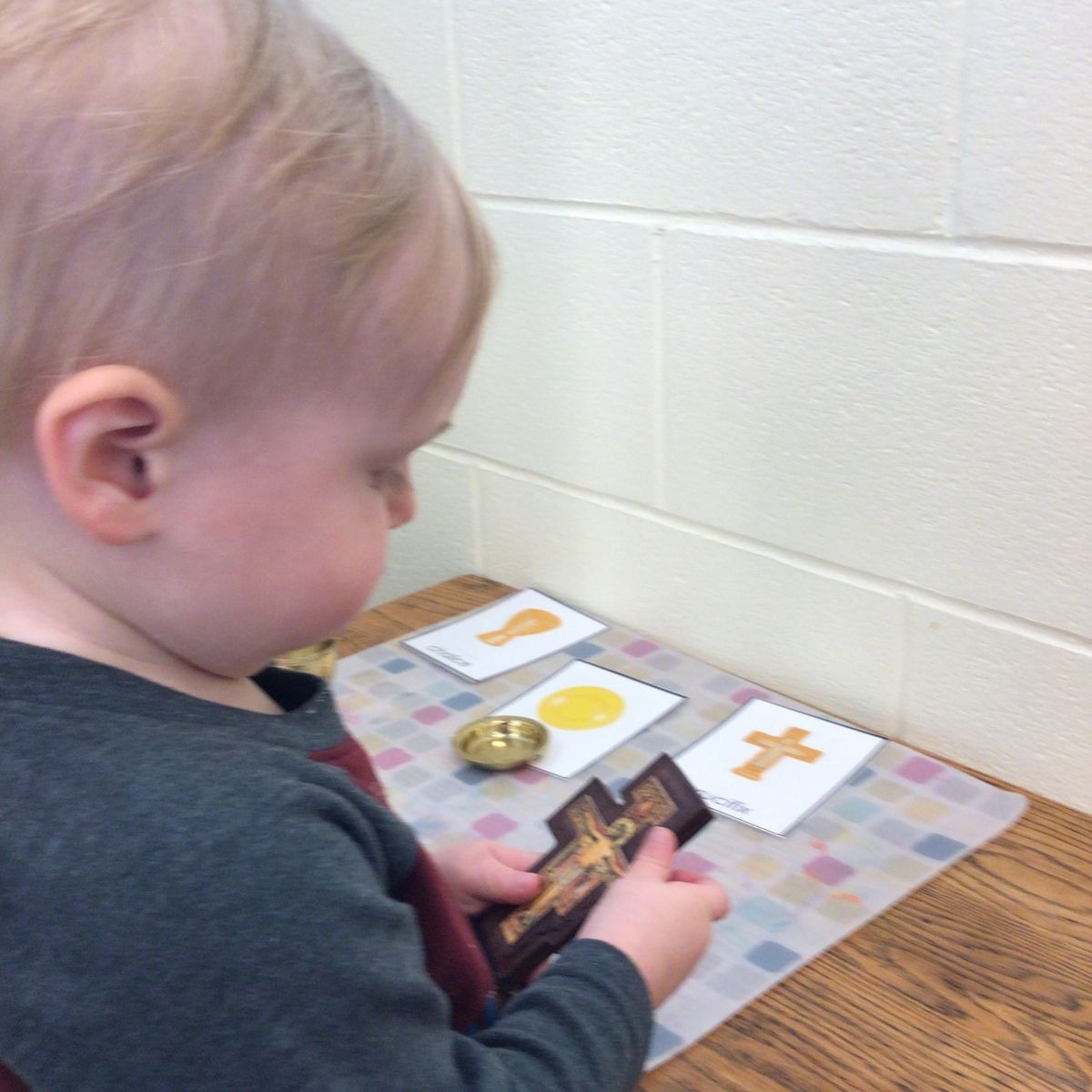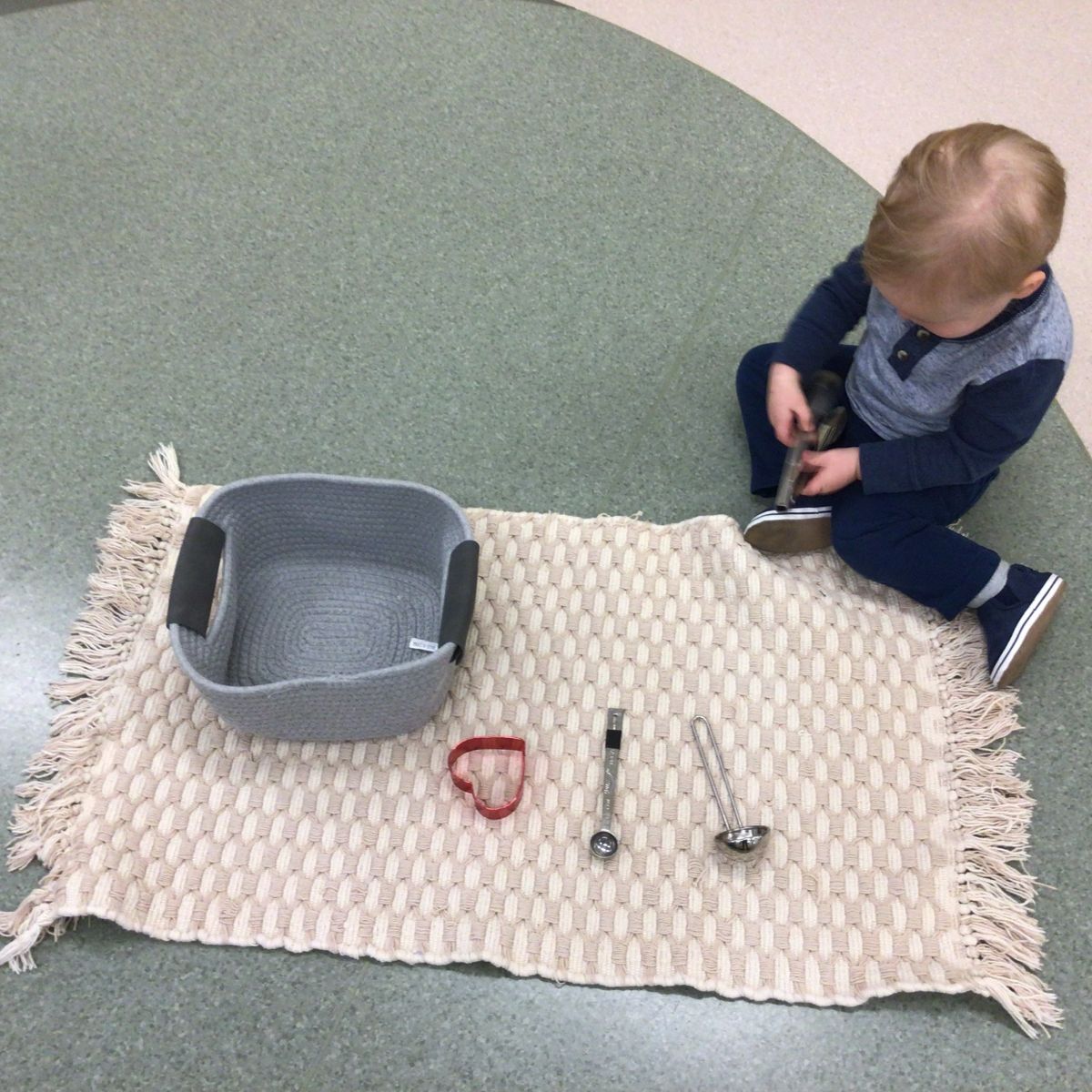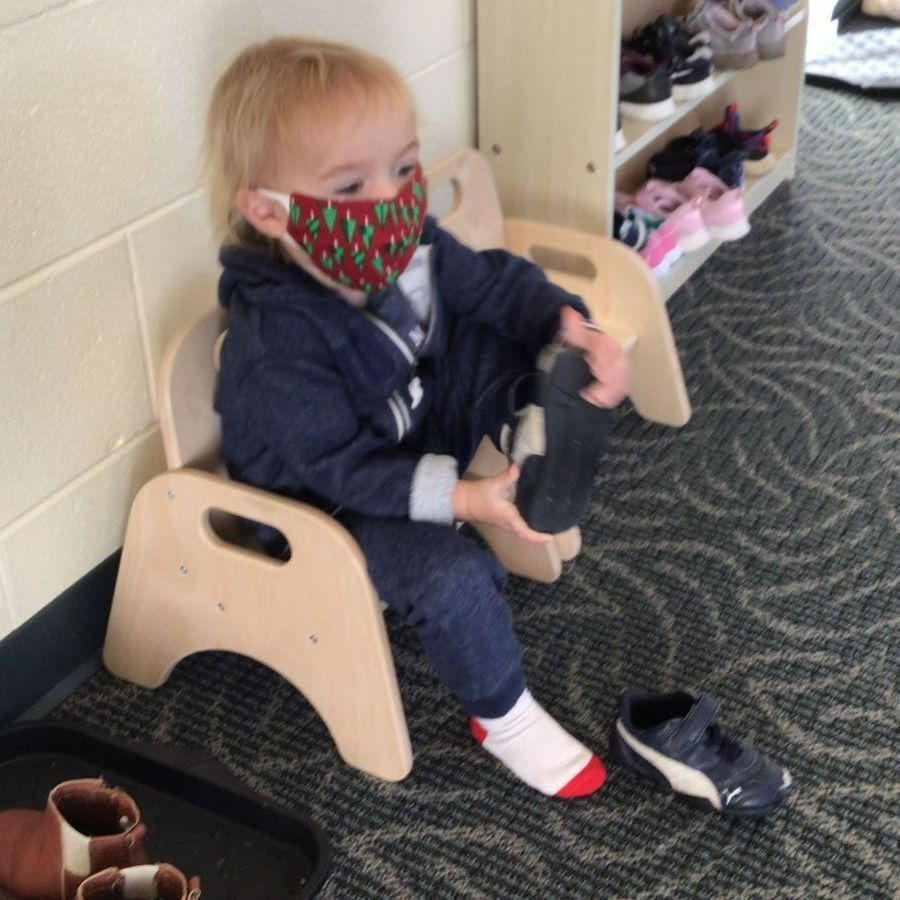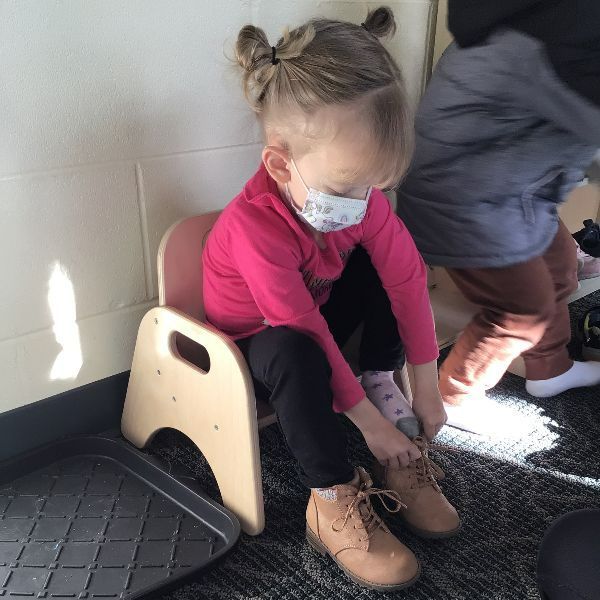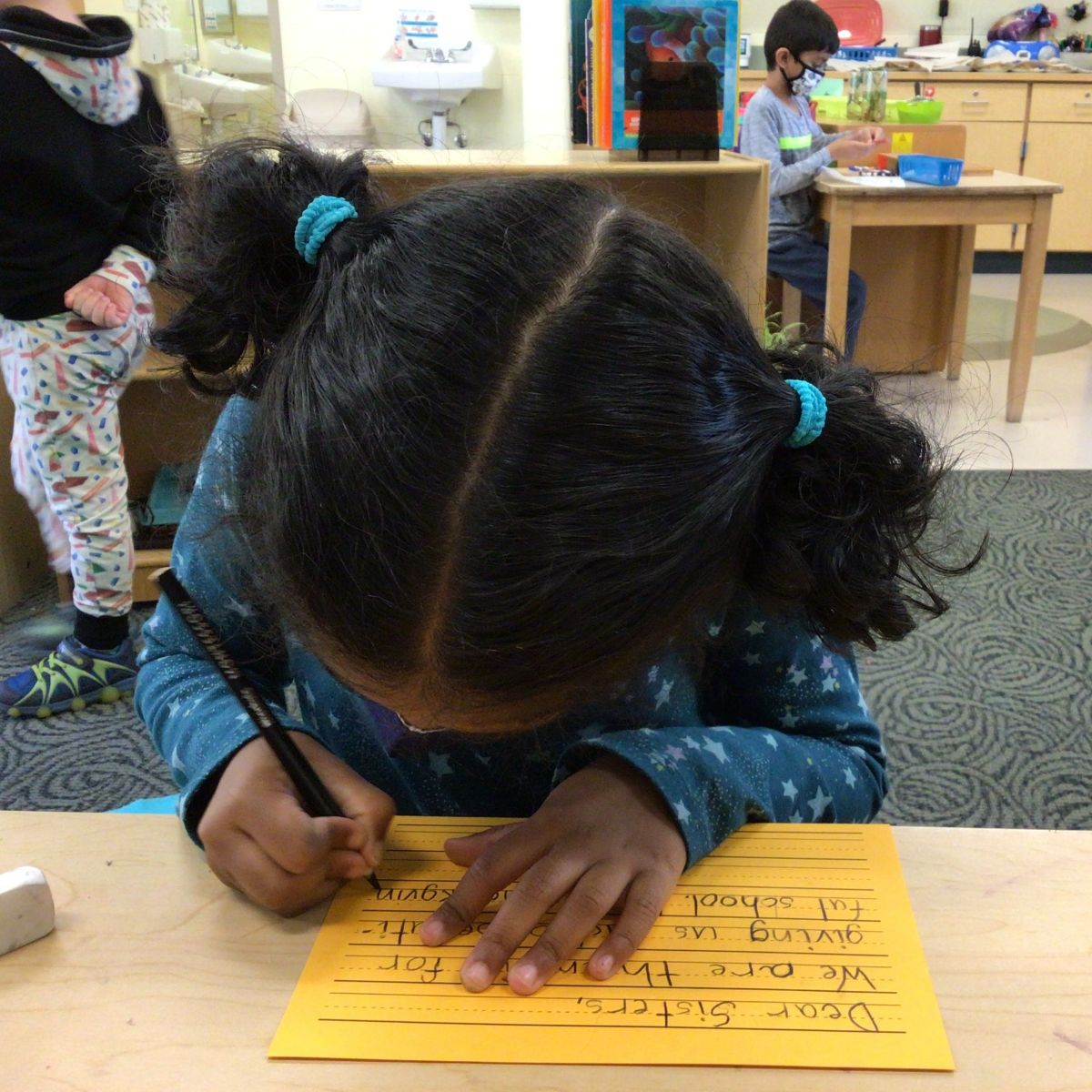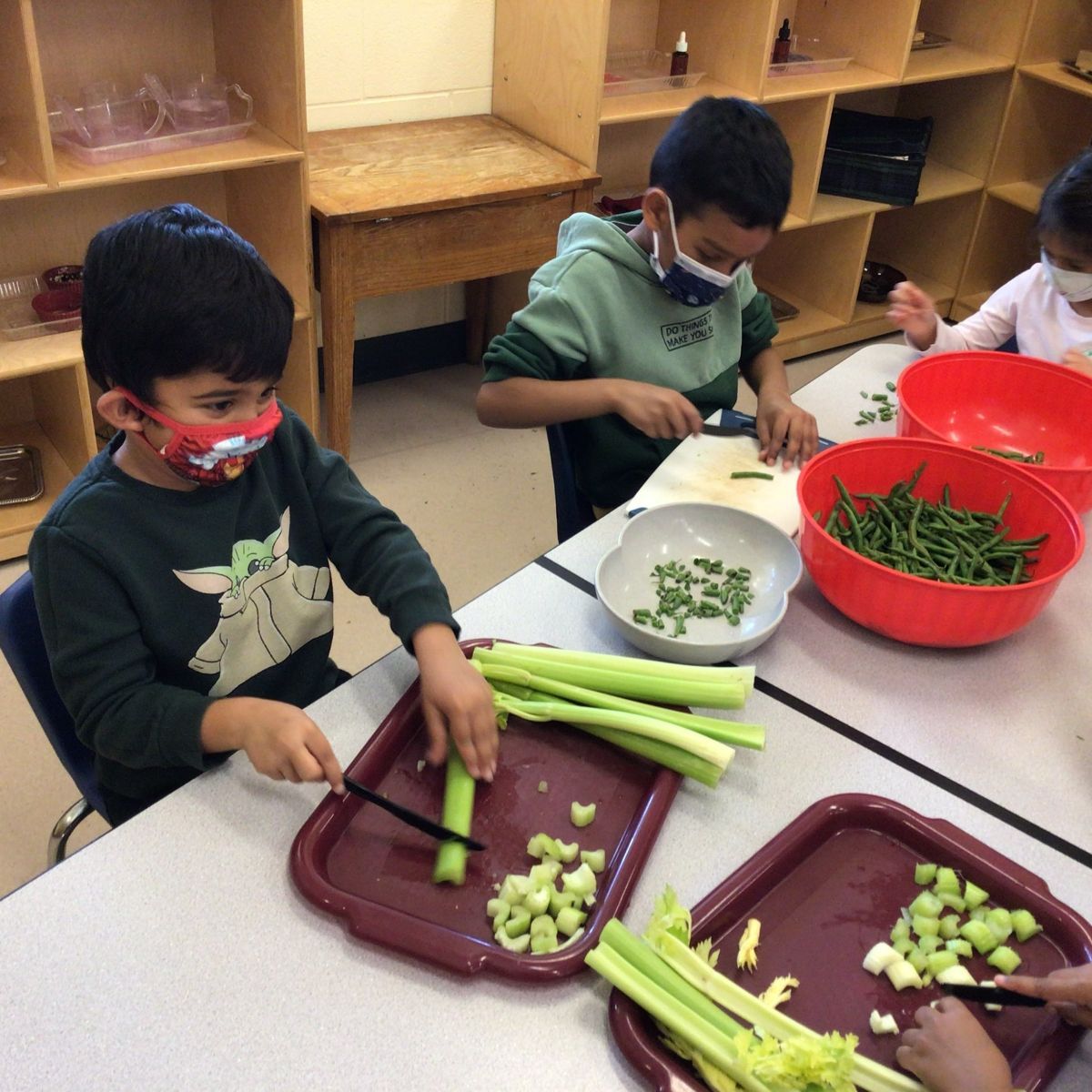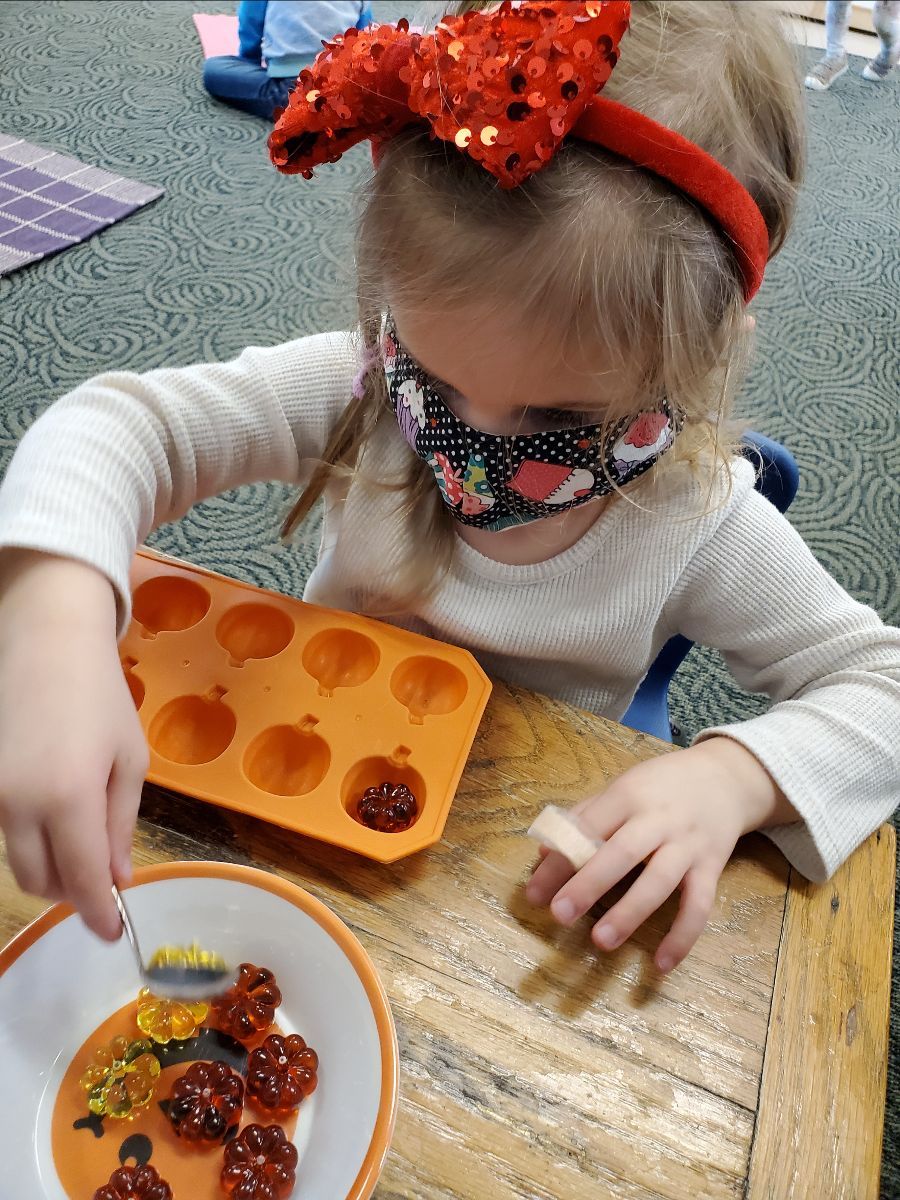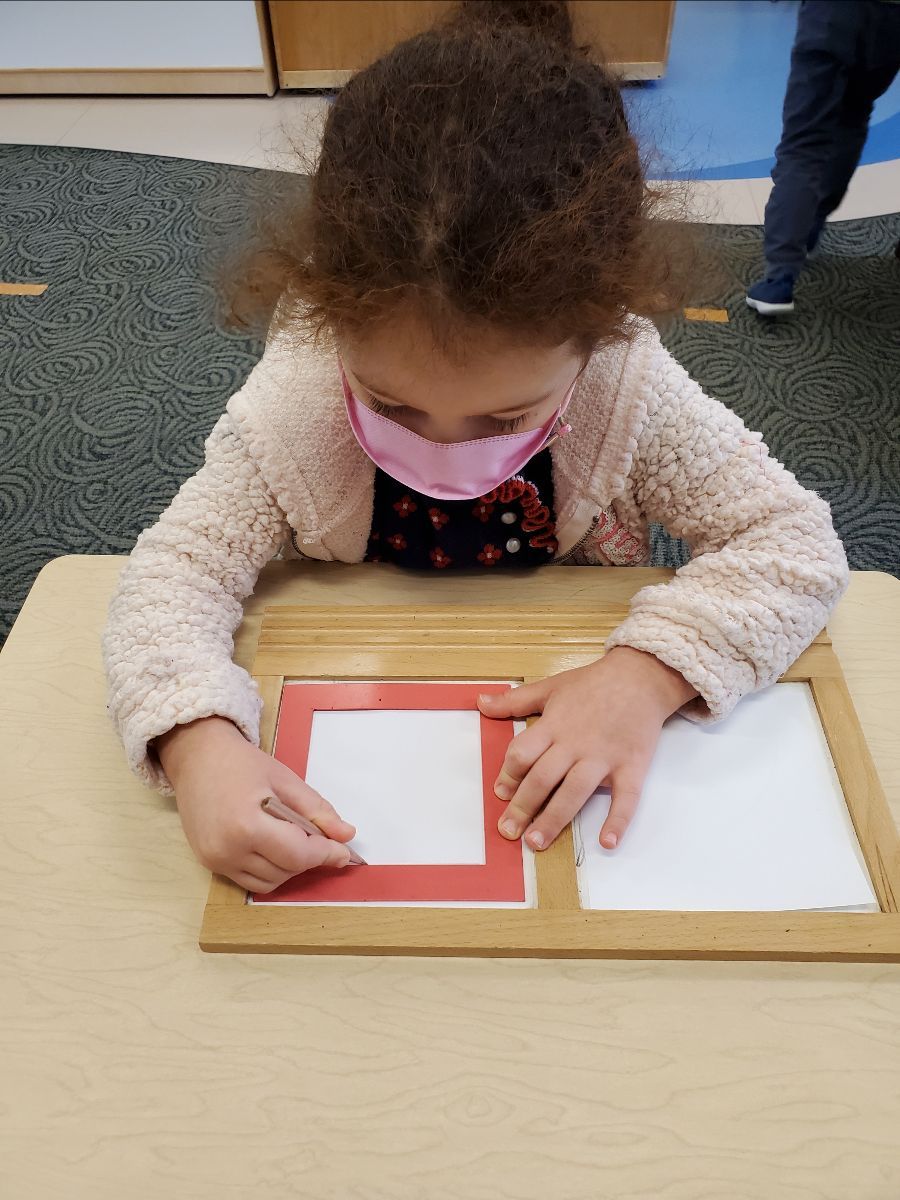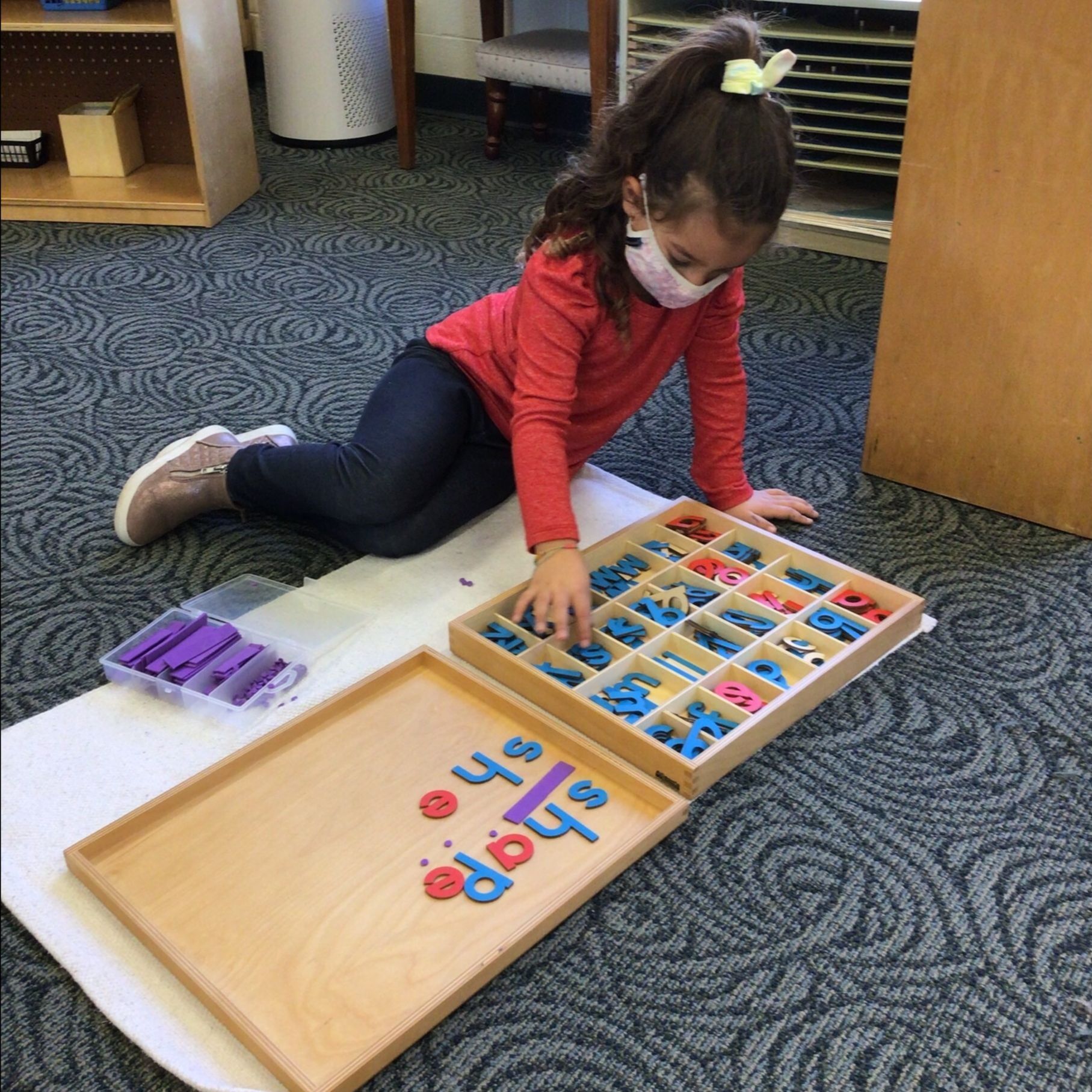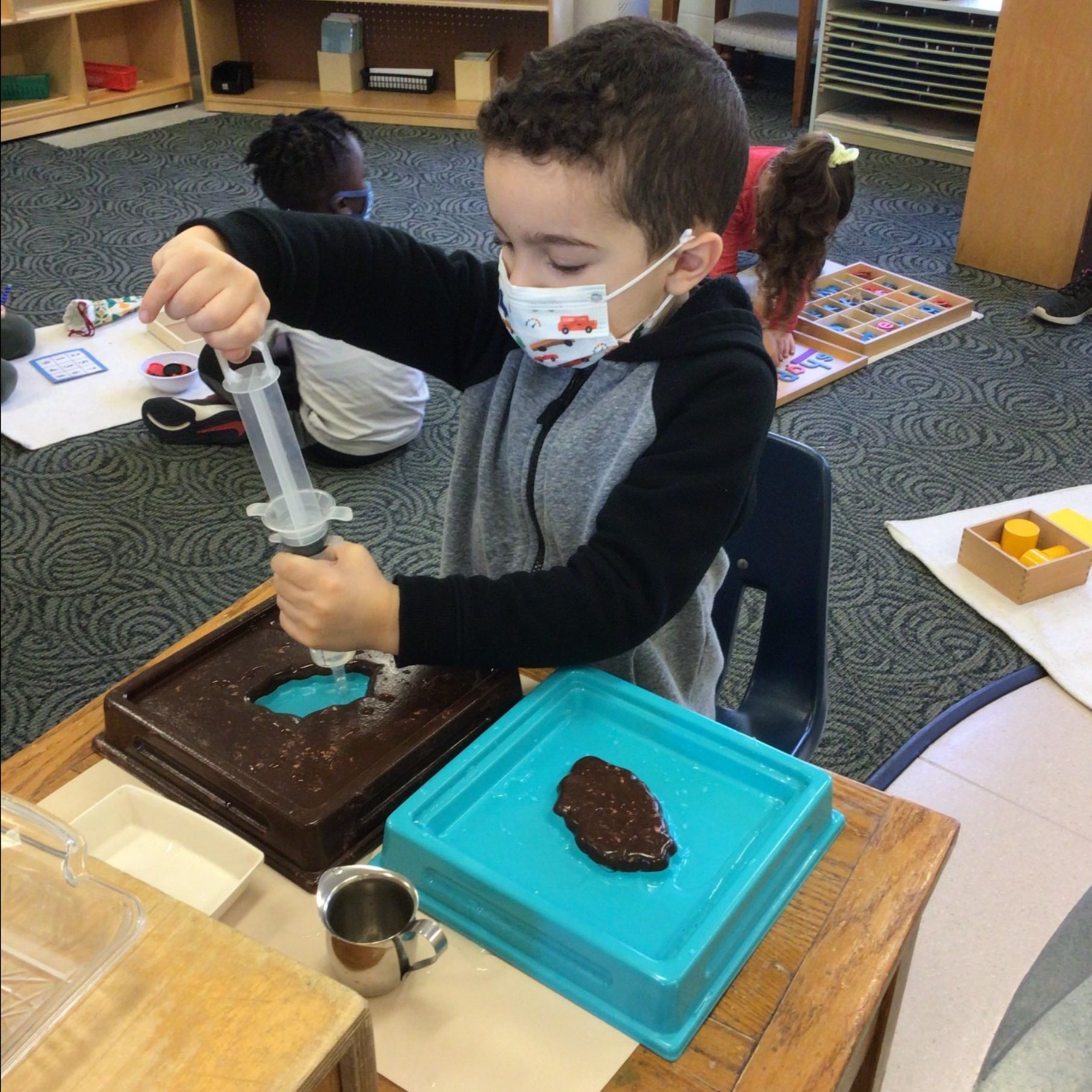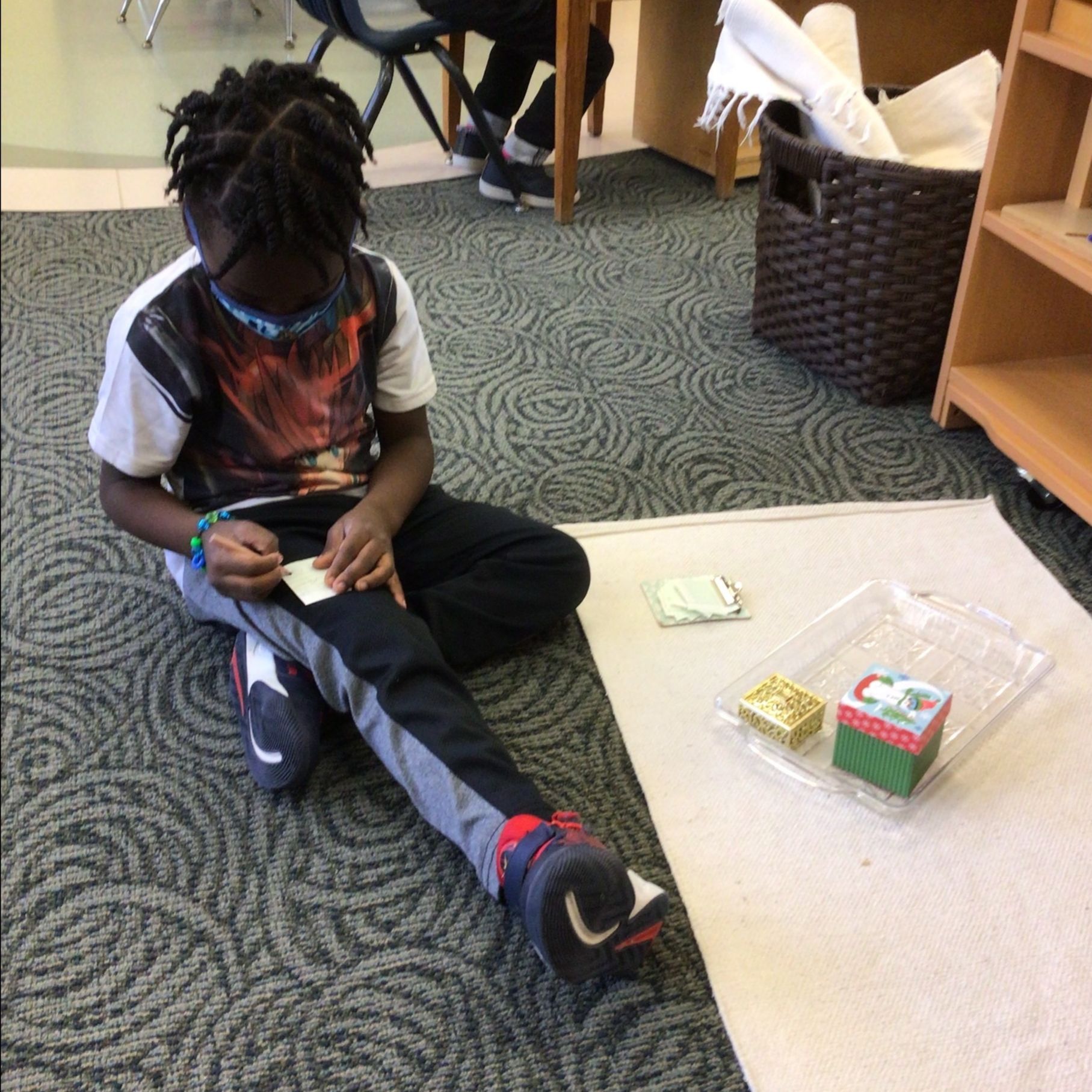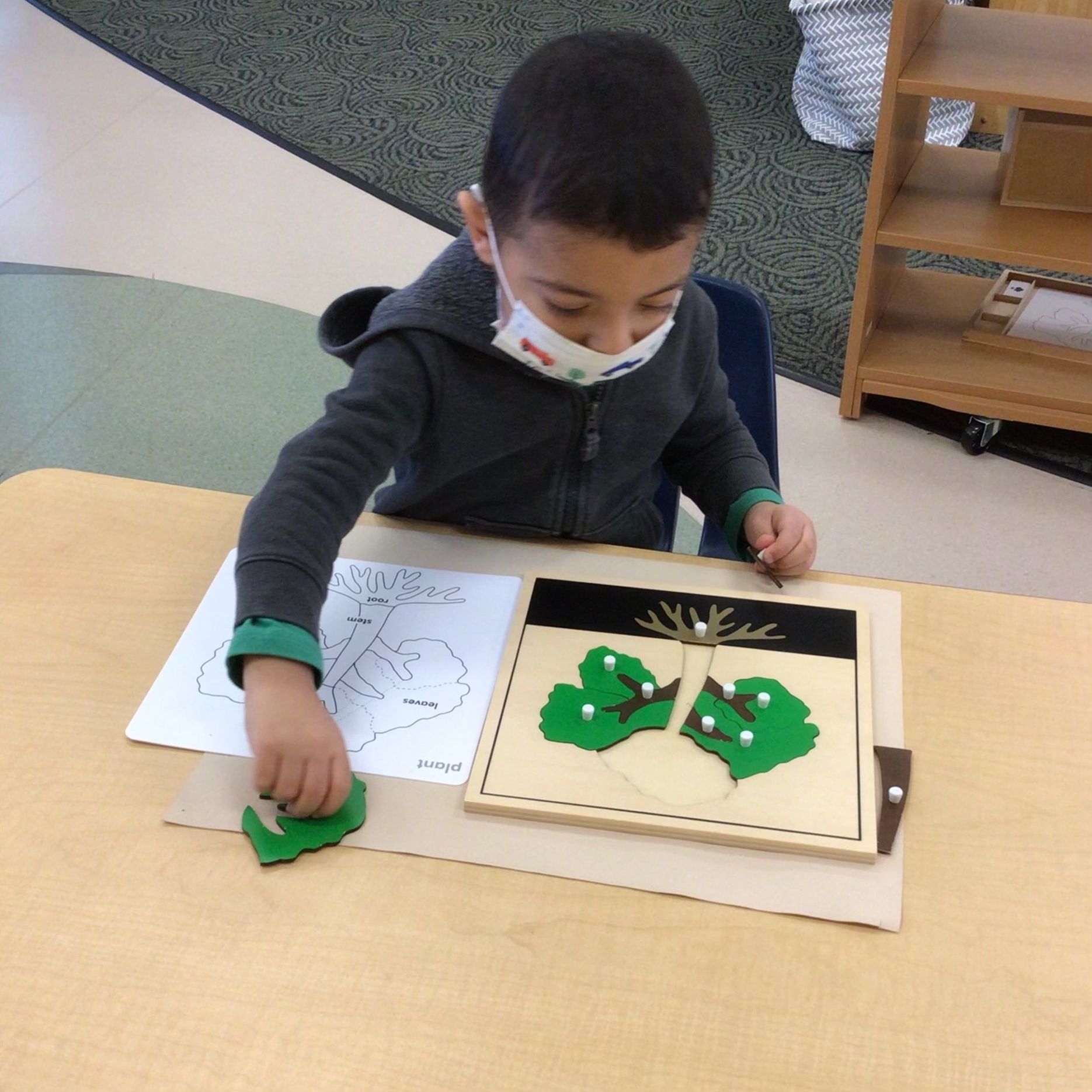December 2021
Christmas greetings, MCOL families,
We are just eight days away from Christmas and all the excitement it brings for our children (and us). 😉 How many times have you imagined Christmas morning as a calm and magical experience, only to experience something a bit different? Our children's expectations may not align, causing a moment or two of upset. We get it. We have a school full of children eagerly anticipating Christmas morning. A few things we do here on a daily basis that may provide support to you at home and get you a little closer to that calm and magical experience follow:
- Remember that even amid Christmas joy, your child seeks boundaries. You can support their internal need for boundaries by explaining the "agenda/routine" with them before the experience itself. Our routines are dependable at MCOL. Each child knows what is happening next. If we modify our routine in the slightest way, say to decorate sugar cookies 😉, we go over the change in our routine at least one day before introducing the change with reminders before enacting the change. Children do best when they know what to expect in the routine and our adult responses.
- We limit the number of changes to their routine at any given time. We do this because it best supports their development. Example: Rather than visiting five different homes on Christmas day, consider opening your home to visitors throughout the day. Doing so allows your child to remain at home with the gifts they have just opened rather than leave them to head out.
- We interpret for the child when they are unsure of the next steps. Example: "Miss Shiva is telling us that it is time to put on our outdoor clothing. You want to go to your cubbie and begin to dress for outdoor play." " Interpreting is particularly helpful when you are with extended family or friends, and different rules of engagement and expectations are in play.
- Be sure to build-in breathing space throughout the day, both for you and your child. Allow the routine for the day to have gradual transitions from one activity to the next.
Breathing space allows us to reset with greater ease.
Thank you so much for supporting our school and our work with your children! From all of us to all of you, we wish you a Christmas that is merry and bright and finds your homes filled with love and laughter as you build memories that carry you forward!
This year, the other sister Felician-Sisters Sponsored Ministries on our campus and Montessori Center of Our Lady were again able to create a Christmas tree for Madonna University's Live Nativity.
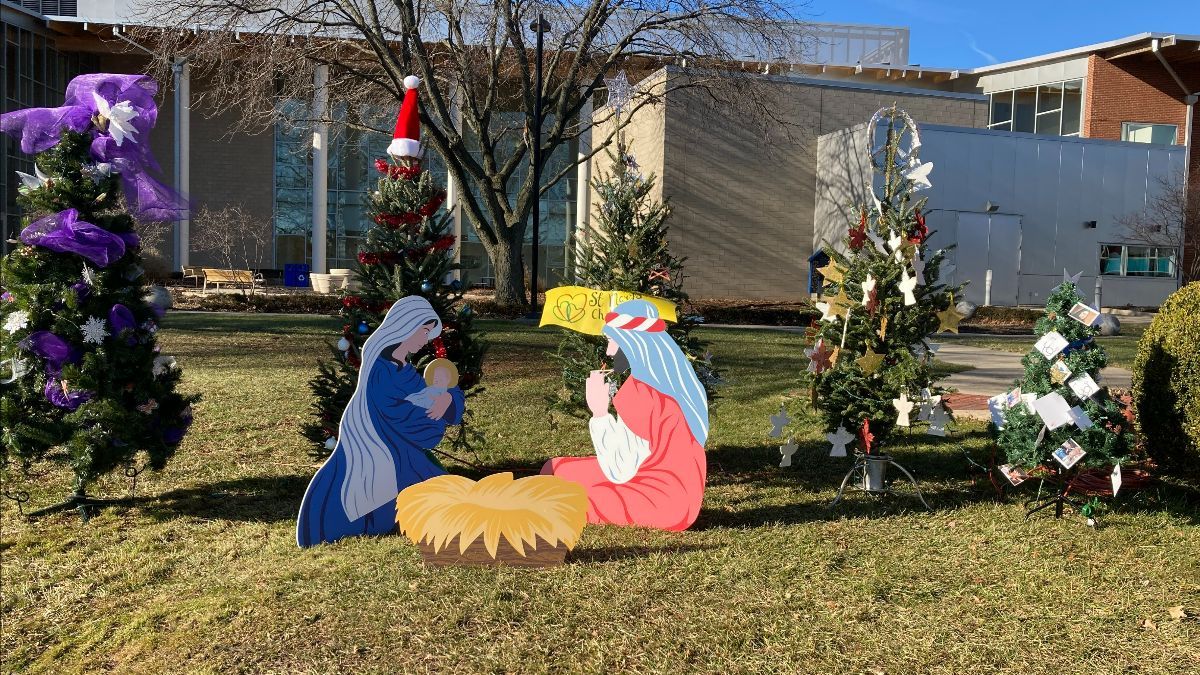
Reminder: Inclement weather and building-related closures come to you through a schoolwide email notification, Remind, our Facebook and Instagram pages, and the ABC, NBC, CBS, and Fox television channels. We do our best to notify you by 6:30 a.m. or sooner, when possible. Please do not rely on one means of communication for such notifications as sometimes the various outlets are experiencing their challenges. If you have not already done so, please Like our Facebook Page or follow us on Instagram.
Now let’s take a look inside our classrooms -
In November, we began to explore the development of the child's sense of the sacred. We introduced items they would find on the Altar should they attend Mass. This is in conjunction with the language curriculum. We are naming the objects and matching them to the picture card. Eventually, the child will set up the Altar themselves. When you are at Mass, point out and name the objects you see. Your child may recognize the chalice, the paten, the candles, the Altar cloth, and the Altar Table. Together we can nurture the spirit of the child.
Similar in aim to last month's treasure basket, we have changed out the treasure objects in preparation for your holiday celebrations. We included various kitchen utensils for the children to explore and learn. While preparing your holiday meals, you have an excellent opportunity for your child to participate. Give them some safe tools to examine and provide the proper name for the kitchen tool—for example, a slotted spoon, tongs, cookie cutters, a teaspoon.
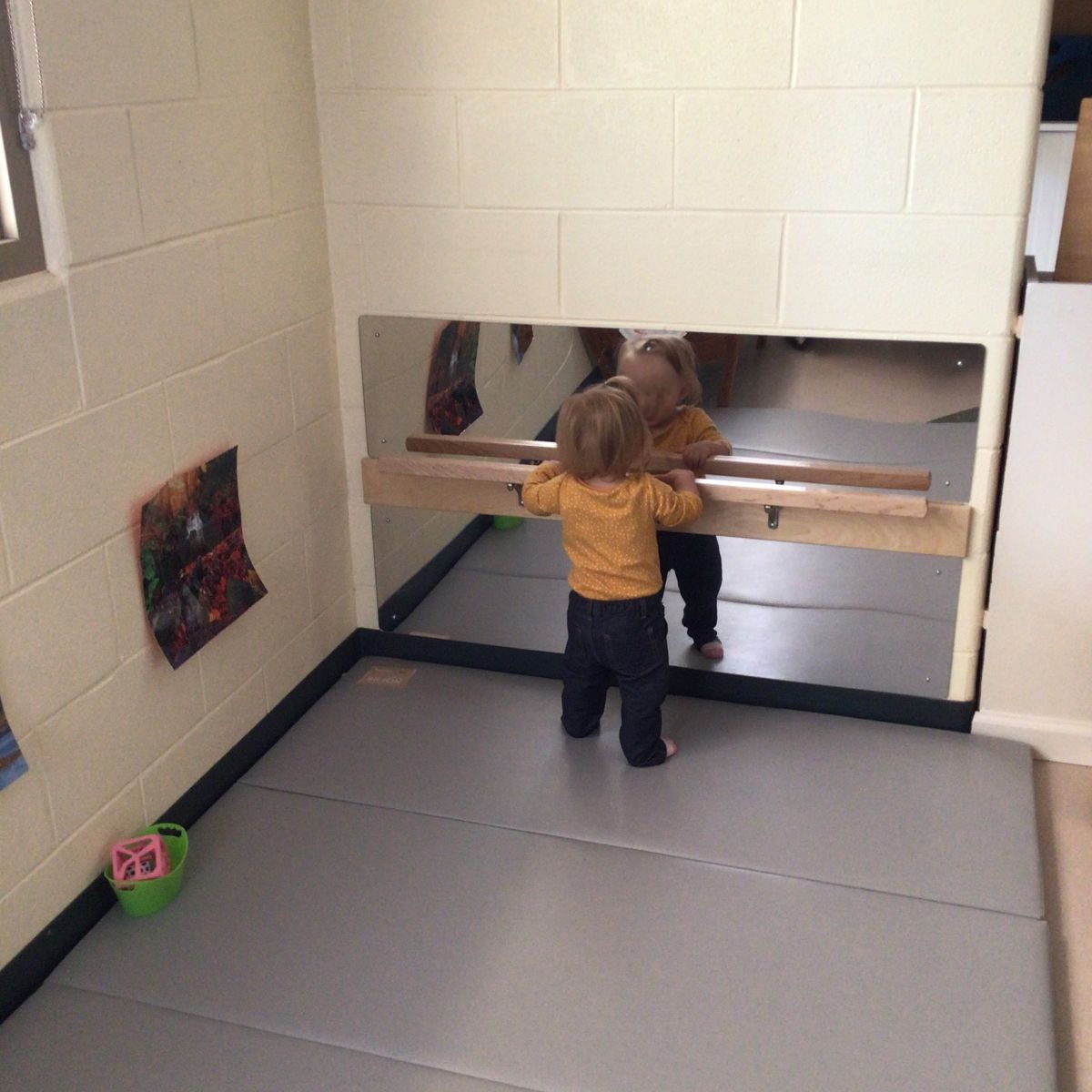
Several of our students have begun to pull themselves up and stand independently. The Montessori pull-up bar was a hot commodity! A Montessori pull-up bar is a safe place for the infants to pull themselves up, stand with an acrylic mirror where their reflection presents itself. Their ability to pull themselves up independently, coupled with their reflection, serves as the point of interest. In this particular work, their newfound physical ability to stand alone using their gross motor muscles in a new way builds confidence. For some, the work even allowed them to take their first side steps as they cruise along the bar. The bar is hung at a specific height to set the child up for success. Like everything in the Montessori classroom, there is purpose and intentionality. The mirror above the bar adds interest and helps the child explore themselves and their environment from a different point of view. The children find joy in their independent movement. It is heartwarming to catch a glimpse in the mirror of their bright smile at themselves as they just pulled themselves up to stand. Their smile says I am confident and proud that I did it, and I did it myself!
For the Christmas holiday, our Nido and Young Children’s Community students created Nativity art using their fingerprints. We then photocopied their art and created placemats for the Priests at Senior Clergy Village and the Sisters at the Central Convent.

Young Children's Community
Our Young Children's Community has continued its move forward with a particular focus on the child's functional independence. Independence is not something that just appears when a child hits a specific chronological age. Nor does it just happen. Often, we hear that teenagers' life skills require independent functioning, yet learning and developing those skills must occur at a much earlier age. Dr. Montessori observed that children are moving toward becoming independent from the moment of birth. Our educational method promotes a child's functional independence at every turn. Dr. Montessori observed that when a child is not functionally independent from those around them (care of self, care of environment, grace, and courtesy), their intellect is then dependent on those around them. Our Young Children's Community students consistently work toward their functional independence at every turn while with us. It begins the moment they exit your car in the morning and continues until they return to you at the end of the school day. Students enter the building and sit down to remove their outdoor shoes and put on their indoor shoes. They repeat this process throughout their school day (outdoor play, nap, going home). There is the act of removing your shoe and then putting your shoe back on... the same shoes, but very different functions.
"The child's nature is to aim directly and energetically at functional independence." — Dr. Maria Montessori
Another act of functional independence in our Young Children's Community centers around lunch and snacks. The students learn how to set the table in preparation for eating. Often, adults insert themselves into such tasks believing we are helping. However, Dr. Montessori observed that any unnecessary help to a child impeded their development. Our minds and that of a child are very different. As adults, we are product-driven with outcomes, whereas young children organically immerse themselves in the process of what they are doing. When working with young children, we must forego our need for a product-driven result and be with them in the process.
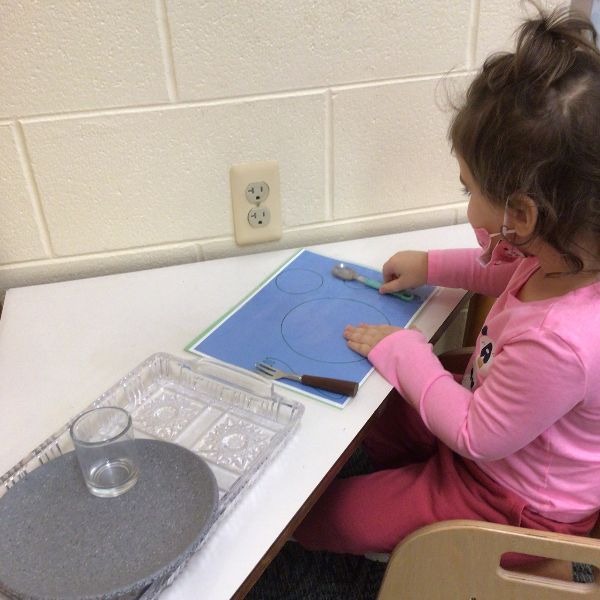
"Any child who is self-sufficient, who can tie his shoes, dress or undress himself, reflects in his joy and sense of achievement the image of human dignity, derived from a sense of independence." ~ Dr. Maria Montessori
Children's House 1
Part of genuine Montessori education is to experience that each of us can make a difference, whether that difference is as simple as saying, "Hello," or smiling at someone in a store, or as big as gathering donations for those in need. Each of us can make a difference independently of others and with the support of others.
Our students made placemats for the Sisters, and our oldest students wrote messages of gratitude on each placemat. Such experiences lend themselves to organic rites of passage for our students. Learning to form letters correctly (penmanship) now has a real-life purpose for a child. Their written words hold value both for them and the recipient of the written message.
Literature came to life with the telling of the story, Stone Soup, followed by the children making Stone Soup in their classroom. The story is about sharing and then coming together as a community in gratitude. A natural fit for this holiday season! After washing their hands, students then washed, peeled, and safely cut a variety of vegetables for the soup independently of their teachers.
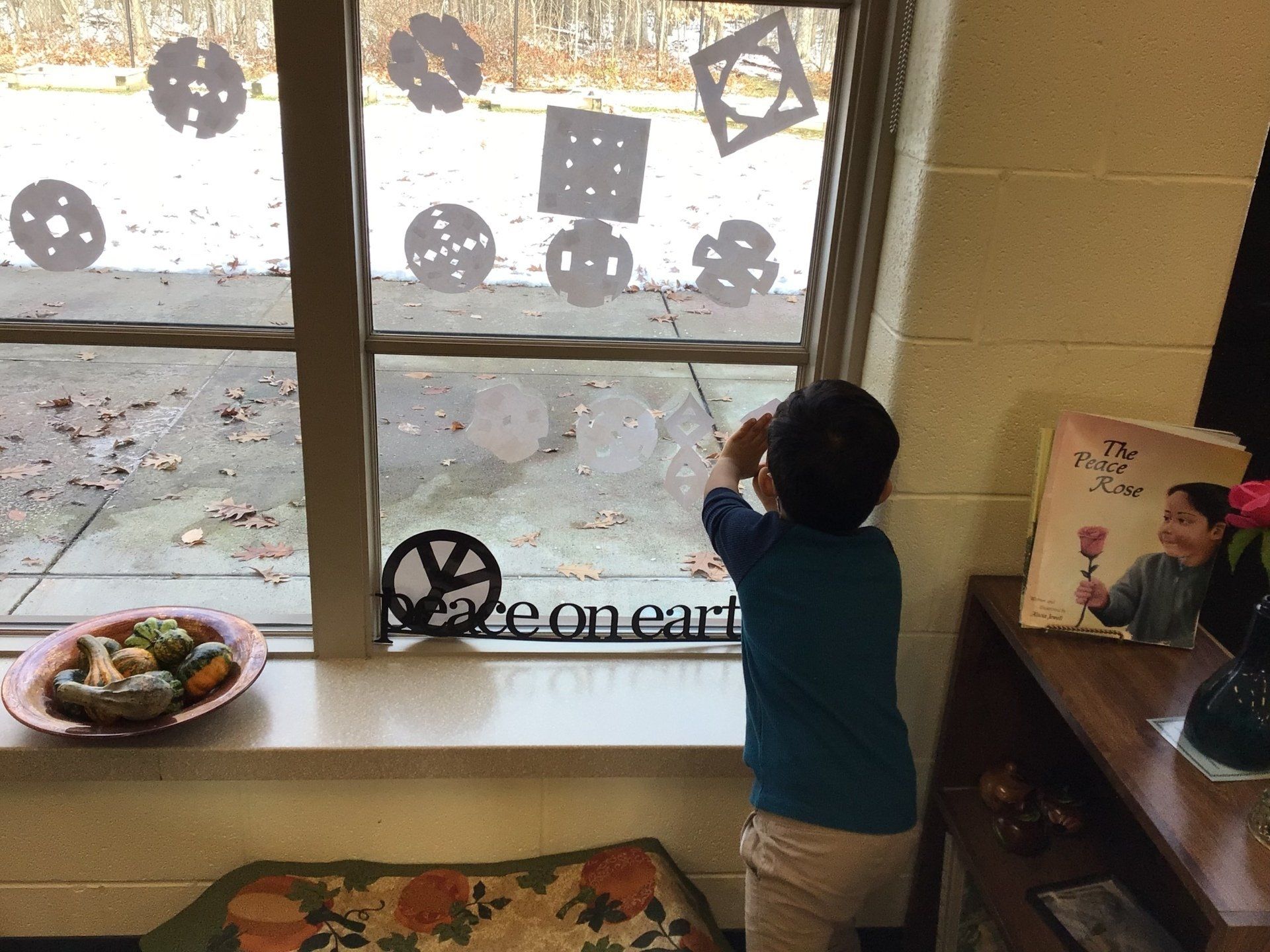
"Independence is not a static condition; it is a continuous conquest, and to reach not only freedom, but also strength, and the perfecting of one's powers, it is necessary to follow this path of unremitting toil." ~ Dr. Maria Montessori
Do you remember how much joy you felt as a child when you learned how to cut your own snowflakes out of paper? Our students received lessons on the skill of cutting out snowflakes by first folding and then understanding where to cut their folded paper to create a snowflake. As students became proficient in making snowflakes, they collaborated to create a winter scene of snow falling on their classroom windows! Beautiful and authentically theirs!
Children's House 2
Dr. Montessori interlaced materials and their aims throughout various curriculum areas, thus allowing the child to build upon each experience. One such example is her placement of the metal insets in the language area as direct preparation for penmanship. At the same time, those geometric shapes are a part of the geometric cabinet in our sensorial area where the child is introduced to the physical form and name of the geometric shape. In the photograph below, you see the student using both her hand and eyes simultaneously to properly trace one of ten insets. Metal inset work does not begin until the child has had extensive indirect preparation using the Practical Life and Sensorial materials. Children refine their gross motor coordination before fine motor coordination. As such, we immerse them in the areas that allow large muscle coordination to develop and integrate into their bodies and mind. and simultaneously develop eye-hand coordination. We never lose sight that we are constantly working our way toward the child's functional independence!
"In this way...children perfect themselves in writing without actually writing." ~ Dr. Maria Montessori
So much of what we do in our daily lives involves our eyes and hands working in unison when sight is a sense we possess. As adults, we often do not need to remind ourselves to keep our eyes on our hands as we perform a task because it has been ingrained since childhood. A key element in our Practical Life exercises involves refining the child's hand and eye coordination. It is challenging to perform these exercises successfully if you do not keep your eyes on your hands. One such example is spooning from one vessel to another. Spooning requires one's eyes and hands to work in sync to prevent a spill. It is not uncommon as the child's skill levels increase to add a level of complexity such as color matching. We are forever building one skill upon the other, strengthening the child's functional independence and freedom in their day-to-day lives. In a Montessori classroom, freedom is not a child free to do anything they like; it is to act independently without help.
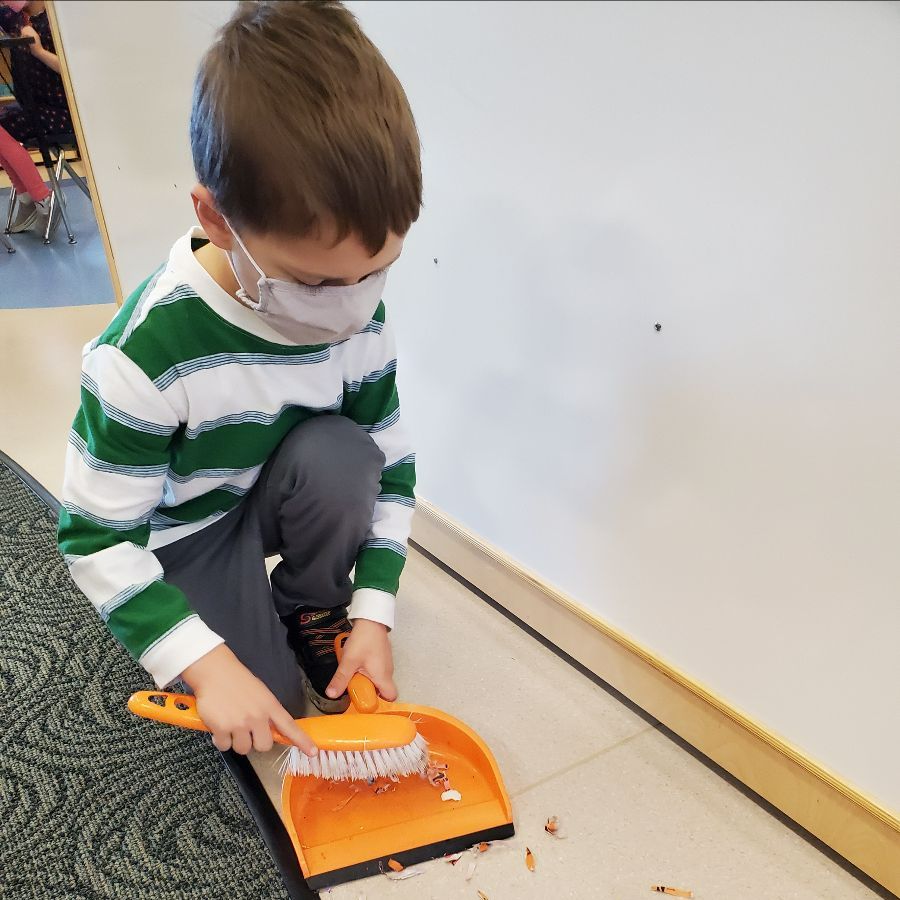
Care of the environments we inhabit is an essential aspect of our daily lives. Without the skills needed to care for our environment, floors become messy, tables become dirty, untucked chairs become tripping hazards, etc. As a child learns to do for themselves, mishaps occur. Dr. Montessori created the means for a child to take care of those mishaps independently without adult intervention. The child easily navigates spills. Whether those spills are dry or wet, there is a material ready for them to tackle the clean-up. The child deepens their functional independence in taking care of such mishaps and refining other aspects of their development.
"The first aim of the prepared environment is, as far as it is possible, to render the growing child independent of the adult." ~ Dr. Maria Montessori
Children's House 3
A big part of a Montessori classroom at any age level is the development and refinement of language. Dr. Montessori created the sandpaper letters to teach a child the formation and phonetic sounds for the alphabet letters. Once a child has acquired phonetic sounds, word building with the moveable alphabet follows. Word building is isolated in difficulty every step of the way, so the emergent reader is successful as they strengthen their growing skills. In the photograph below, you see a child is working with combinations of sounds and is learning how to analyze the sounds that make up the words she is building. We analyze sounds using dots and lines. We do this because reading words is not about the number of letters in a word. Rather, it is about the sounds that comprise it. Reading allows a child's functional independence to blossom because it is a skill they possess.
"Language is the instrument of thinking together." ~ Dr. Maria Montessori
Language continues in the area of geography in a Montessori classroom. Yes, the child learns the world's continents, countries that comprise those continents, land and water forms, etc., but the direct aim is oral language development. Dr. Montessori knew the child's mind absorbed language with little effort from birth to age six. As such, she placed geography and science in our classrooms for language development. The photograph below shows a child working with two land/water forms - island and lake. The child mastered the skill of using a large syringe in the Practical Life area long before using the syringe to collect and release water in this geography lesson.
The mystery number work allows the child to refine their one-to-one correspondence daily. A special lidded box has a mysterious number of objects placed inside each day. The interested child may bring the work to a rug and lay the objects on it. The child then counts those objects and writes (or asks for assistance if younger) the numeral on a small piece of paper. The paper then goes into a gathering vessel with the mystery number (quantity) revealed at the end of the school day.
"The greatest gifts we can give our children are the roots of responsibility and the wings of independence." ~ Dr. Maria Montessori
Calendar Reminders
December 18 through January 2 - Christmas Break
Monday, January 3 - Classes Resume
Monday, January 17- No School - Martin Luther King Jr. Day
January 30 through February 5 - Catholic Schools Week
February 2 through 15 - Re-Enrollment for current MCOL students
Monday, February 14 - Celebrate St. Valentine's Day in the Classroom
Tuesday, February 15 - eTuition payment Due
Thursday, February 17 - Open Enrollment to Livonia and the surrounding communities
Friday, February 18- Half Day
February 19 through 21 - Midwinter Break

